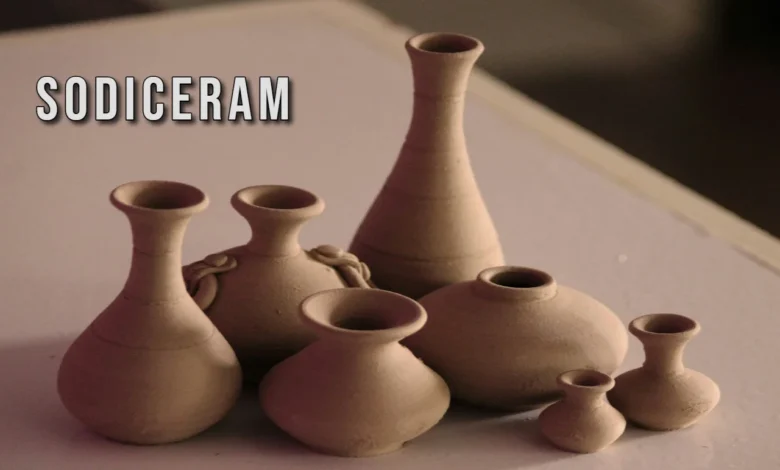Sodiceram: How This Innovative Technique is Transforming Pottery

Pottery has been an art form for thousands of years, with artisans honing their skills through traditional techniques passed down from generation to generation. But what if there was a revolutionary approach that could transform this age-old craft? Enter Sodiceram—an innovative technique that is reshaping the world of pottery. Founded by visionary artist and engineer Sarah Thompson, Sodiceram combines cutting-edge technology with artistic expression, offering potters new ways to create stunning pieces. This article explores how Sodiceram is not only changing the game but also paving the way for a more sustainable, creative, and efficient future in pottery making. Get ready to discover the exciting intersection of tradition and innovation!
Traditional Pottery Techniques vs. Sodiceram
Traditional pottery has always been cherished for its intimacy—the tactile connection between artist and clay, the imperfections that make each piece unique, and the slow, meditative process of shaping, glazing, and firing. However, these methods can also be time-consuming and inconsistent, with results often dependent on environmental factors and firing precision.
Sodiceram introduces a new perspective. This technique fuses digital design tools, advanced materials, and precision-controlled processes to elevate the art of pottery to a new level. Artists can now replicate intricate designs with consistency while preserving the handmade charm that defines ceramic art. The result? A perfect balance of artistic authenticity and technological accuracy.
Sodiceram also opens doors for experimentation with complex geometries and organic forms that are difficult to achieve by hand. Whether it’s creating wafer-thin porcelain sculptures or durable, heat-resistant dishware, the flexibility of Sodiceram allows potters to expand the limits of their creativity.
The Science Behind the Sodiceram Process
At the core of Sodiceram lies a fascinating combination of engineering precision and material science. The process begins with a specially formulated clay mixture enriched with mineral composites that enhance strength and resilience. These additives ensure that the final product can withstand both thermal stress and mechanical impact, making it ideal for both decorative and functional use.
Advanced temperature control systems during firing are another game-changer. Traditional kilns often produce uneven heat distribution, leading to cracks and warping. In contrast, Sodiceram uses sensor-driven kilns that maintain consistent thermal gradients, resulting in flawless finishes and longer-lasting pottery.
Moreover, Sodiceram’s eco-friendly glazing technology replaces many harmful chemicals traditionally used in ceramic finishes. The result is a more sustainable, vibrant, and non-toxic coating that enhances both beauty and safety.
Every stage of Sodiceram’s process—from clay formulation to final glazing—reflects a deep understanding of both chemistry and craftsmanship, redefining what modern pottery can achieve.
Benefits of Using Sodiceram for Pottery Production
- Exceptional Durability – The enhanced clay composition results in stronger and longer-lasting ceramics.
- Design Versatility – Artists can explore innovative patterns, textures, and shapes once considered impossible.
- Increased Efficiency – Faster production cycles without sacrificing quality mean artists can focus more on creativity.
- Eco-Friendliness – Reduced firing times and non-toxic materials promote environmentally responsible artistry.
- Vibrant Aesthetics – Improved color depth and surface finish give each piece a distinctive and eye-catching appeal.
Sodiceram is not just a technique—it’s a complete ecosystem that empowers artisans to create more sustainably while expanding their creative possibilities.
Success Stories: Artists Shaping the Future with Sodiceram
Across the globe, artists are embracing Sodiceram and reimagining what’s possible with clay.
- Maria Johnson, known for her lifelike porcelain sculptures, credits Sodiceram for enabling her to achieve microscopic details that were impossible with hand-sculpting alone.
- Liam Chen, a ceramic tile designer, has leveraged Sodiceram’s precision to create architectural ceramics that blend durability with exquisite artistry.
- Zoe Patel, a rising talent, uses the technique to craft futuristic tableware collections that merge aesthetic minimalism with sustainable materials.
These pioneers demonstrate how Sodiceram bridges the gap between tradition and modernity, empowering artists to push the boundaries of their imagination.
Sustainability and Environmental Impact of Sodiceram
One of the most compelling aspects of Sodiceram is its commitment to environmental sustainability. Traditional pottery production often involves high energy consumption, non-recyclable waste, and toxic glazes. Sodiceram, on the other hand, redefines eco-friendly craftsmanship through:
- Reduced energy consumption, thanks to optimized firing temperatures.
- Sustainable raw materials that minimize environmental depletion.
- Low-emission production, contributing to cleaner air and less waste.
- Recyclable clay by-products, which can be reused in future creations.
By aligning creativity with responsibility, Sodiceram is proving that innovation and sustainability can coexist harmoniously in the world of art and manufacturing.
Future Possibilities and Developments
The future of Sodiceram holds immense potential. With ongoing research, we may soon see AI-assisted design tools integrated into the process, helping artists craft even more intricate pieces. Collaborative projects between scientists, engineers, and artisans could lead to ceramics that are not only artistic but also functional in new ways—such as heat-resistant architecture panels or medical-grade ceramics.
There is also growing interest in integrating biodegradable materials and recyclable glazes, further enhancing the environmental promise of this technique. The evolution of Sodiceram represents a new chapter where art, technology, and ecology converge to shape the ceramics of tomorrow.
Conclusion
Pottery has always been an art of patience, precision, and passion. With Sodiceram, that legacy continues—but now infused with modern innovation. This revolutionary technique doesn’t replace tradition; it enhances it, empowering artists to create faster, cleaner, and more creatively than ever before.
By merging science with soul, Sodiceram symbolizes the next evolution of pottery—a world where sustainability, efficiency, and artistry coexist seamlessly. As more artists adopt this technique, we can look forward to a future filled with beautiful, durable, and environmentally conscious ceramics that redefine the boundaries of creative expression.




